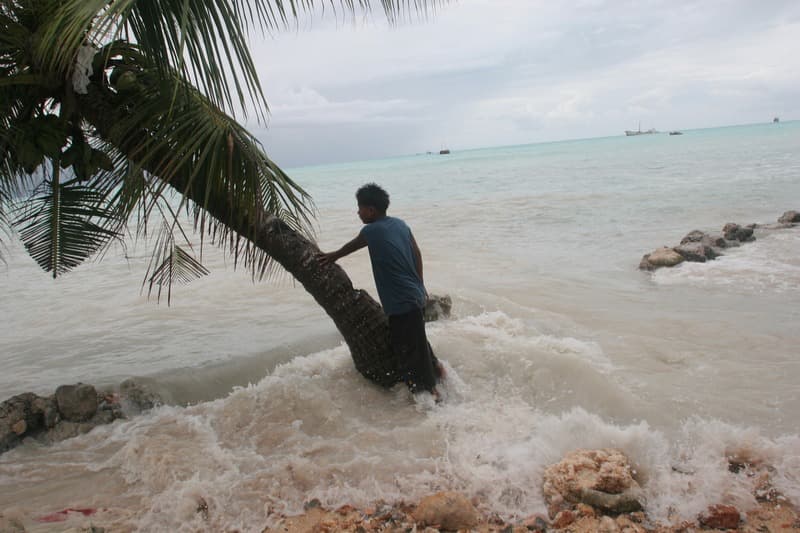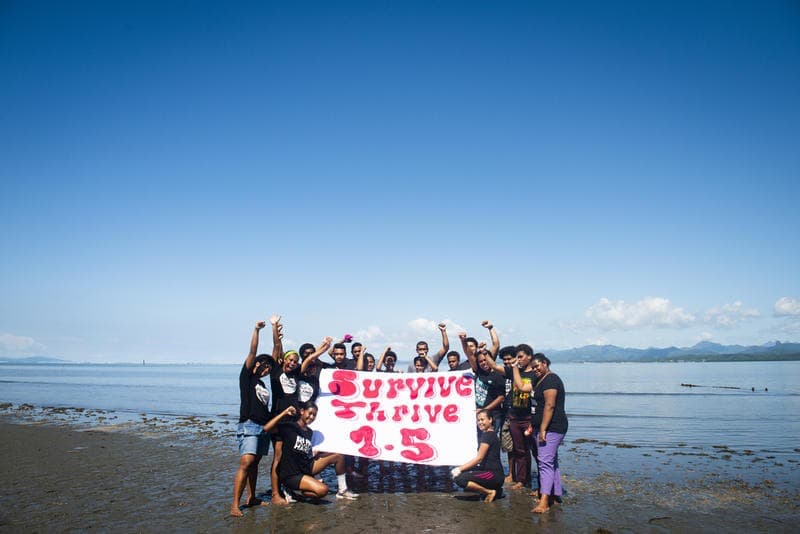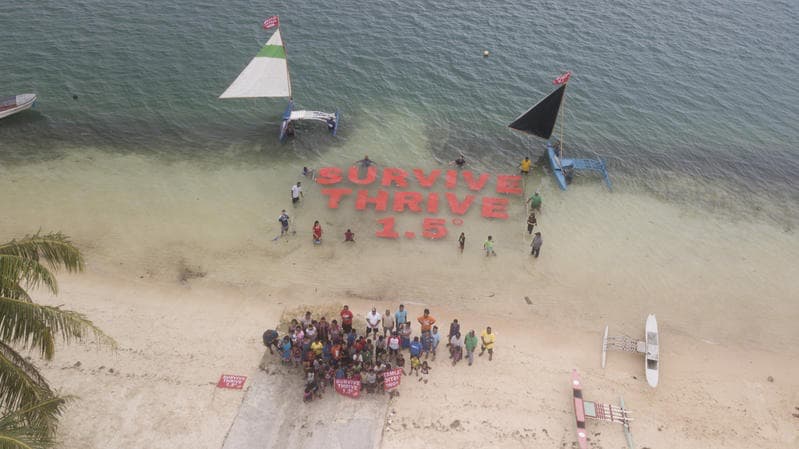Greenpeace Australia Pacific Board Member and human rights lawyer Kavita Naidu leads our Pacific delegation that will fight for climate justice at COP26.
In less than a week, world leaders and representatives of almost 200 countries will meet in Glasgow, Scotland to come to an agreement on how to rein in a climate crisis that seems increasingly out of control.
In the leadup, there has been a lot of focus on nations’ and leaders’ pledges to reduce emissions to net-zero by 2050, particularly in Australia. But it’s worth stressing that net-zero by 2050 is not what COP26 is about.
This meeting has been correctly billed as the most important global climate summit since the Paris Agreement was signed in 2015, with the explicit aim of capping global temperature rise at 1.5 degrees Celsius in order to prevent catastrophic climate change. The world still has a pathway to keeping global heating under 1.5 degrees but the window is closing and leaders need to step up now, not in 2050.

That’s why world leaders like UK Prime Minister Boris Johnson, US President Joe Biden and the UN Secretary-General have been stressing the urgent need for countries, like Australia, to bring plans to make deep cuts to emissions by 2030. A call that Australia has so far stubbornly resisted, leading to global condemnation and bewilderment, given the plethora of climate impacts that frequently hit Australia. Scott Morrison will take a 26-28 percent 2030 cut to Glasgow, while the UK host is pledging a 68 percent cut and the EU, a 55 percent cut. Australia’s lack of ambition places it in the company of fossil fuel villains like Saudi Arabia and Russia.
Now is the critical decade and if we are to have any chance of being net carbon neutral by 2050, we need to start doing the heavy lifting now.
This is the most important climate meeting this decade.
Every COP is different, but Glasgow is the most significant global climate conference since the Paris COP in 2015. That was when most nations finally committed to ensure a safe, stable climate by keeping temperature rises below 2C and preferably 1.5C. COP26 is the deadline for governments to submit their plans to cut their emissions to stay under the 1.5C warning.
While many countries recently laid out their plans to cut emissions, when you add them all together they fall far short of where we need to be. The recent UN scientific report warned of a very bleak future if we don’t do some big things very soon and Glasgow is where those big things need to be set in motion. We still have time if we act now!

What does Greenpeace do at COP?
Greenpeace sends representatives to the COP because it’s important to have experts, campaigners, and those on the frontlines of the climate crisis in the negotiations – observing, making contributions, and making sure that politicians are listening. This year amplifying the voices of climate-vulnerable countries is more important than ever because the pandemic has dramatically limited participation at COP26. A number of island nations, including in the Pacific, are unable to attend, that’s why Greenpeace Australia Pacific is supporting Pacific peoples to attend COP26 and have their voices heard where life-altering decisions about their futures will be made.
Greenpeace Australia Pacific Board Member and Pacific human rights lawyer, Kavita Naidu, will be attending COP26 to make sure the Pacific region’s calls for stronger climate action and climate justice are heard by world leaders.
Greenpeace is also supporting a number of Pacific youth to attend COP26 and report back to their communities on the negotiations that could have a huge impact on their futures.

The Marshallese activists gather in Majuro, embark on traditional wooden vessels and paddle into the ocean, with a 7x10m banner reading “Survive. Thrive. 1.5”.
The activities are held in the lead up to the Marshall Islands-hosted virtual summit of the Climate Vulnerable Forum (CVF) on November 22, the first-ever zero-emission Heads of Government level meeting, held entirely online.
What would success at COP26 look like?
Greenpeace and our friends in the Pacific under the umbrella of the Pacific Islands Climate Action Network (PICAN) have laid out the necessary climate actions that we want to see agreed to at COP26:
- Climate finance and solidarity for developing countries: Vulnerable nations and developing countries need to receive the promised $100 billion annually until 2025 – and increased political attention given to loss and damage and new climate finance above $750 billion annually beyond 2025.
- At least halve global emissions by 2030 and net zero emissions by 2050, with the richest nations, such as Australia, moving significantly faster – backed up by ambitious emissions-cutting plans from world leaders.
- A COP decision that calls for a phase-out of fossil fuels (at home and abroad)
No new oil wells, no new coal power stations, no new coal mines and no new gas projects. And no public support, like subsidies, for existing fossil fuel projects, which should be phased out. Coal – the most carbon-polluting fossil fuel – should be phased out as quickly as possible. - Climate justice. All UN members support Vanuatu’s bid for an International Court of Justice Advisory Opinion on climate change and human rights.
So, is Greenpeace feeling hopeful ahead of COP26?
Yes, we are hopeful. Just six years ago the Paris COP brought us a truly global climate agreement with a target to get out of this crisis. Now it’s time to implement that and take the necessary action to finally end the fossil fuel era.
But we shouldn’t see it as a make-or-break moment either. The climate summit can be the catalyst for the climate action we desperately need, but whatever happens in Glasgow we still need to push governments across the world to make big carbon cuts as soon as possible.
And we are hopeful because we have the support of tens of thousands or everyday people who believe in a clean and healthy planet and are willing to fight for it. Greenpeace doesn’t take donations from corporations, and to stay independent we don’t accept government funding. Instead, our work relies on people like you chipping in what they can. Together, we can hold world leaders like Scott Morrison to account and work together towards a brighter future.


